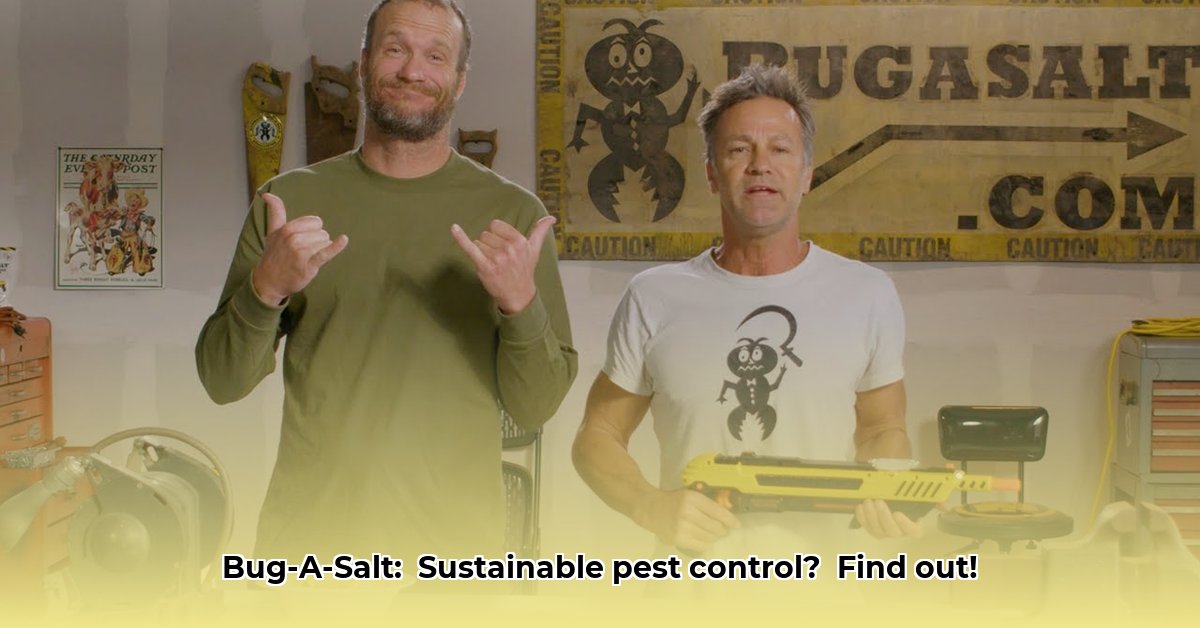
Finding effective and environmentally friendly ways to manage pests is crucial for agriculture. Traditional chemical pesticides, while effective, often carry significant environmental and health consequences. Sustainable pest management offers a more balanced approach, minimizing harm while maximizing crop yields. This article explores various sustainable pest management techniques, highlighting the role of innovative tools like the Bug-A-Salt, available at Tractor Supply. For more on protecting your flock, check out this helpful resource on chicken coop supplies.
Sustainable Pest Management: A Holistic Approach
Sustainable pest management isn't about eradicating every insect; it's about maintaining a healthy balance within the ecosystem. A thriving ecosystem is less susceptible to pest outbreaks. Integrated Pest Management (IPM) is a cornerstone of this approach, utilizing a combination of strategies to control pest populations without relying heavily on synthetic chemicals. This multifaceted approach includes careful monitoring, the implementation of good agricultural practices, the utilization of natural pest predators, and the strategic, limited use of chemical pesticides as a last resort. This holistic method boosts the resilience of agricultural systems while protecting the environment.
Did you know? Implementing IPM strategies can lead to a 20-30% reduction in pesticide use, preserving both the environment and farmer budgets.
Bug-A-Salt at Tractor Supply: A Targeted Tool
The Bug-A-Salt, available at Tractor Supply, offers a novel approach to pest control, particularly against flying insects. This salt-powered device uses a small amount of salt to dispatch pests, providing a chemical-free alternative. While not a complete solution, it's a valuable tool within a broader IPM strategy, offering precision and ease of use. Its availability at Tractor Supply makes it accessible to a wide range of users.
Beyond Bug-A-Salt: A Diverse Arsenal of Techniques
Several additional sustainable pest management strategies can significantly reduce reliance on harmful chemicals:
- Crop Rotation: Alternating crops annually disrupts pest life cycles, preventing population booms.
- Companion Planting: Strategically planting certain species together can naturally repel pests.
- Biological Control: Introducing natural predators (e.g., ladybugs, praying mantises) provides a biological form of pest control.
- Biopesticides: Derived from natural sources like bacteria or fungi, these offer a safer alternative to synthetic pesticides.
A Step-by-Step Guide to Implementing Sustainable Pest Management
Creating an effective sustainable pest management plan involves these key steps:
- Monitor: Regularly inspect crops to detect early signs of pest activity.
- Identify: Accurately identify the specific pests involved.
- Develop a Plan: Select a tailored combination of sustainable pest management methods, including options like Bug-A-Salt, crop rotation, or biopesticides, based on your specific needs and environmental considerations.
- Act: Implement your plan rigorously and consistently.
- Evaluate: Assess the effectiveness of your methods, adjusting your strategy as needed for optimal results. Successful sustainable pest management is an adaptive process.
Key Fact: Early detection of pests can reduce damage by up to 75%, underscoring the importance of regular monitoring.
Sustainable Pest Management: A Balanced Perspective
While sustainable pest management offers numerous benefits, it’s important to acknowledge potential challenges:
| Feature | Advantages | Disadvantages |
|---|---|---|
| Environmental Impact | Minimizes pollution; protects beneficial insects and wildlife. | Some biopesticides may have minor environmental impacts. |
| Economic Impact | Long-term cost savings; supports biodiversity and ecosystem health. | Initial investment in training and some materials might be necessary. |
| Effectiveness | Highly effective for longer-term pest management; requires a tailored approach. | Requires more time and effort; effectiveness may vary depending on the pest. |
| Social Impact | Protects human health; improves long-term food security. | May necessitate additional training for farmers. |
Dr. Anya Sharma, Extension Entomologist at the University of California, Davis, emphasizes, "Sustainable pest management requires a shift in mindset. It's about working with nature, not against it. By adopting a holistic approach and choosing the right tools, like Bug-A-Salt, farmers can create healthier and more resilient systems."
Successfully integrating strategies like Bug-A-Salt with other effective methods significantly reduces the reliance on harmful chemicals, creating a healthier environment and bolstering crop resilience. Further research and innovation will continue to refine sustainable pest management practices for greater effectiveness and broader accessibility.